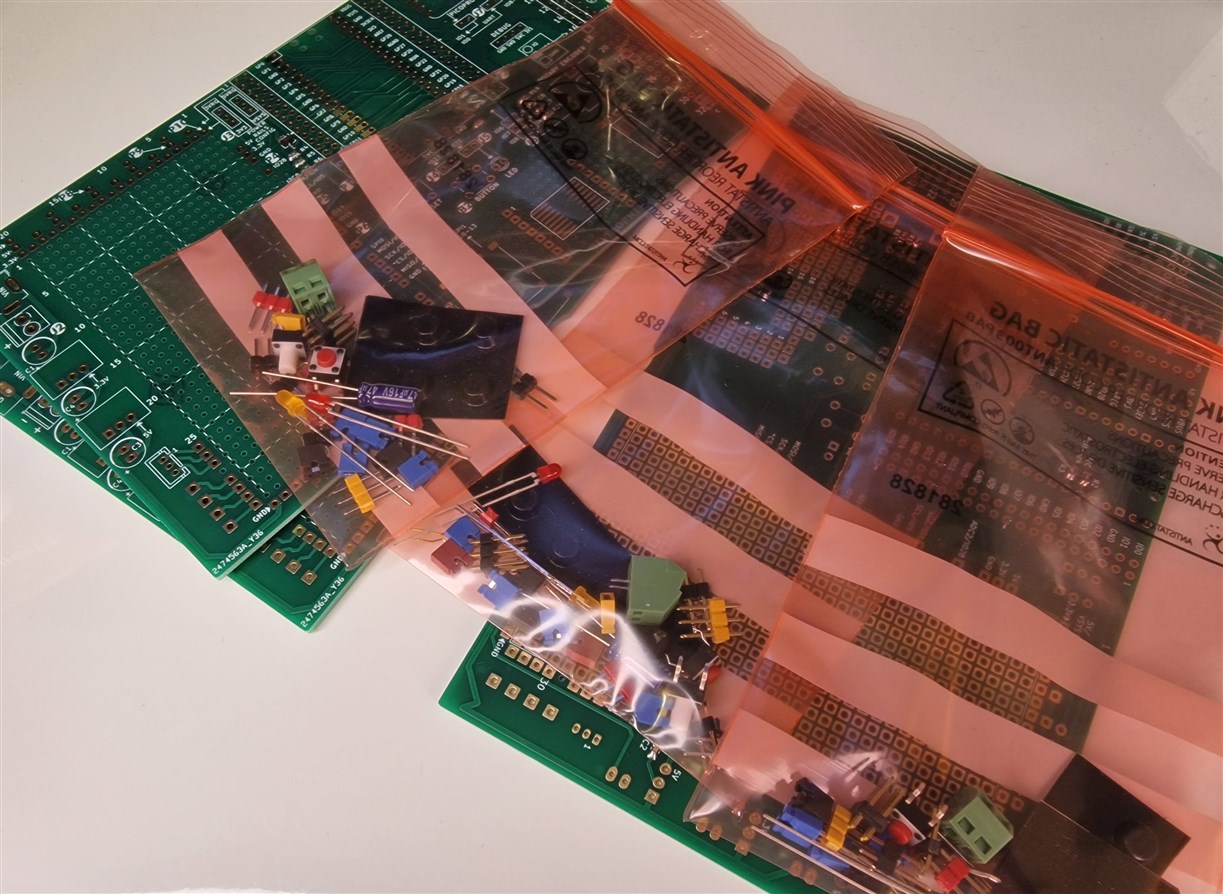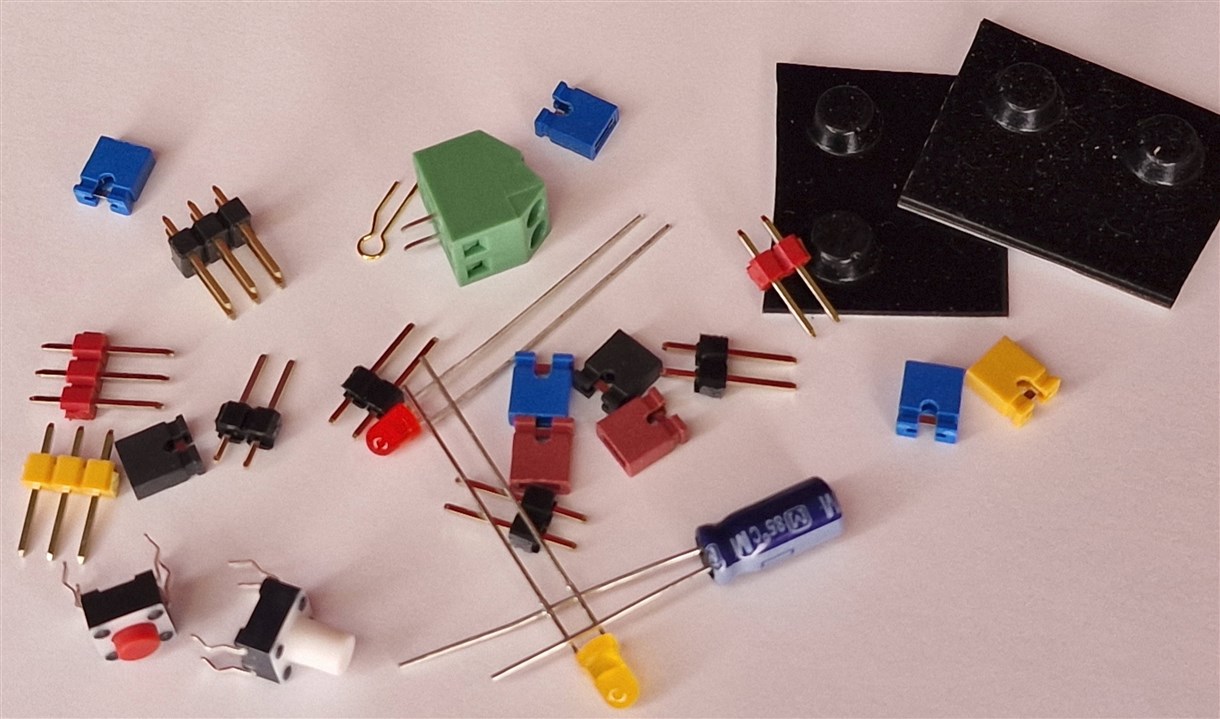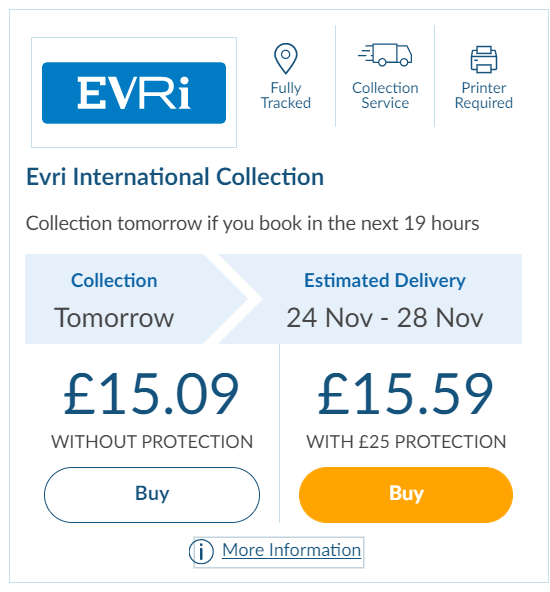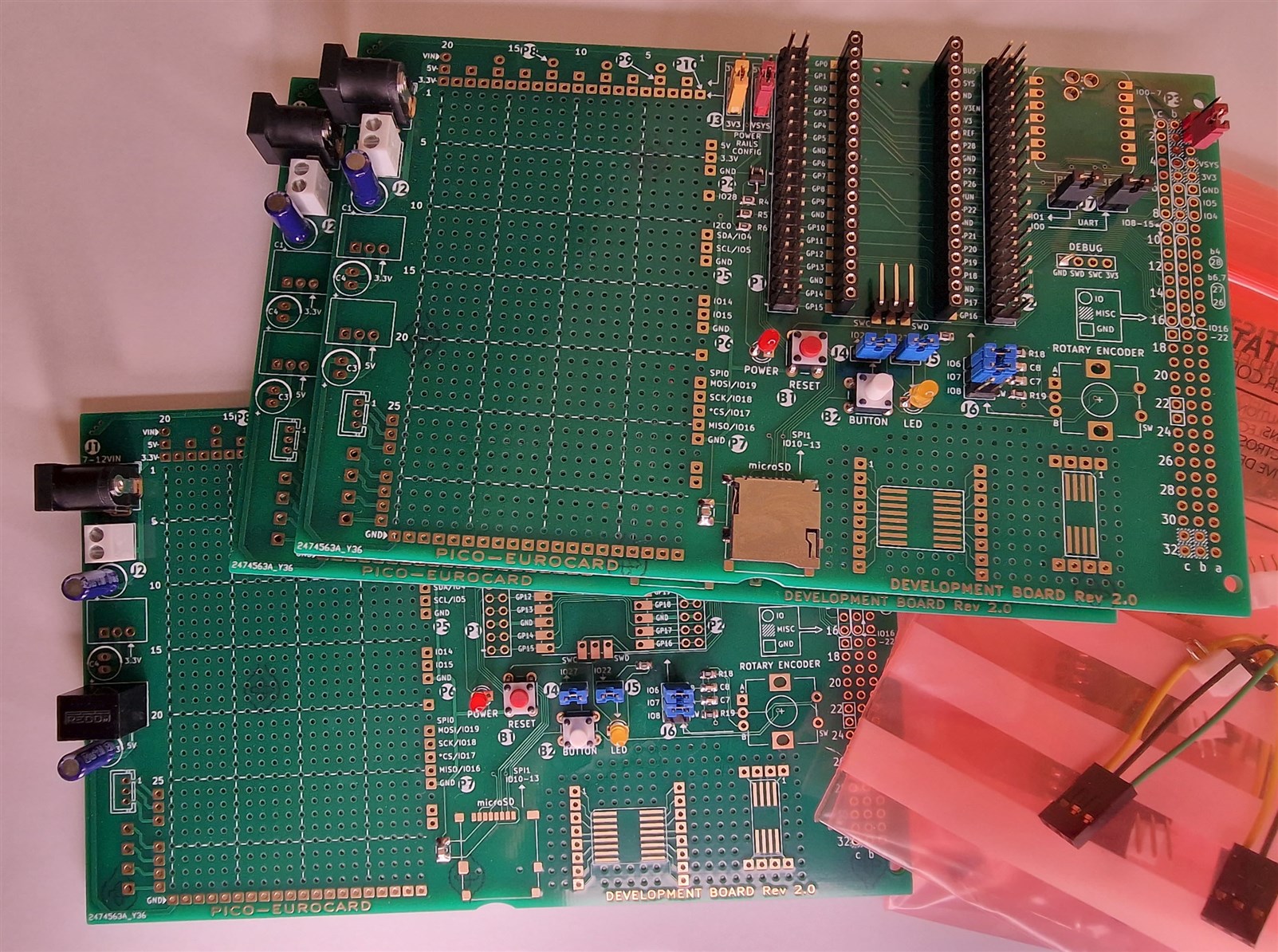EDIT: all gone, but it is easy to build your own, using the more recent (currently rev 2.2) files on GitHub.
(Hoping it is OK to post this, since it's a not-for-profit thing!).
Hi,
I have three Pico Eurocard Rev 2.0 (it's a recent version, with no known issues so far!) build-as-you-go-and-bring-your-own-Pico package : )
A fully populated Rev 2 looks like this:

However the build-as-you-go-and-bring-your-own-Pico version requires you to bring your own Picos', and it can be immediately used, but it is missing stuff that can be added later, such as the voltage regulator modules and microSD card socket.
The board has all surface-mount Rs, Cs and the single MOSFET pre-soldered, since they would be a pain to ship unassembled, due to the small size.
The package includes a bag of through-hole parts, but it doesn't include header pins/sockets and DC-DC converter, DC jack and microSD socket. Those are all easy to locally source, and are not essential, to use; just a Pi Pico is required, but you may wish to also get some header pins as well. Then, if you need (say) more 3.3V capability, then you could buy a 3.3V regulator (it's just a couple of £) and add it on.
These are spare boards, I don't want to charge anything for them. If you feel uncomfortable with that, then I'll accept the cost of the raw PCB and components, which let's say is £5. But I will only accept that so people don't feel uncomfortable accepting a free item : ) but there's no obligation to pay - just pay for the shipping. I will have to declare the nominal £5+shipping on the customs form however.
There's no warranty, and no returns since this wouldn't be a very good business venture to sell at no profit : ) and it's an experimental board and I'm not charging or warranting the SMD assembly either : ) However as mentioned, it's unlikely there will be any fault (and I took ESD precautions soldering the SMD parts).
The photo here shows everything that is included.

This is the contents of the bag of through-hole bits:

Tracked shipping (from UK) will be £15 USA, £10 in Europe, and let's say £5 UK, and I will use parcel2go.com.
Example, USA shipping:

Please use the parcel2go.com website to see the quote for any other country (courier collection, tracked please!).
If you're interested, please leave a comment telling me, and then send me a private message with the shipping address (or click to connect and then send me the shipping address). There are only three boards as mentioned (one per person), and I'm unlikely to build more by hand : )
In terms of payment, I have no convenient mechanism for this that I wish to use, but instead we could barter for say coffee vouchers : ) for instance costa e-gift using https://gifting.costa.co.uk/
I'll send you my e-mail address for that.






